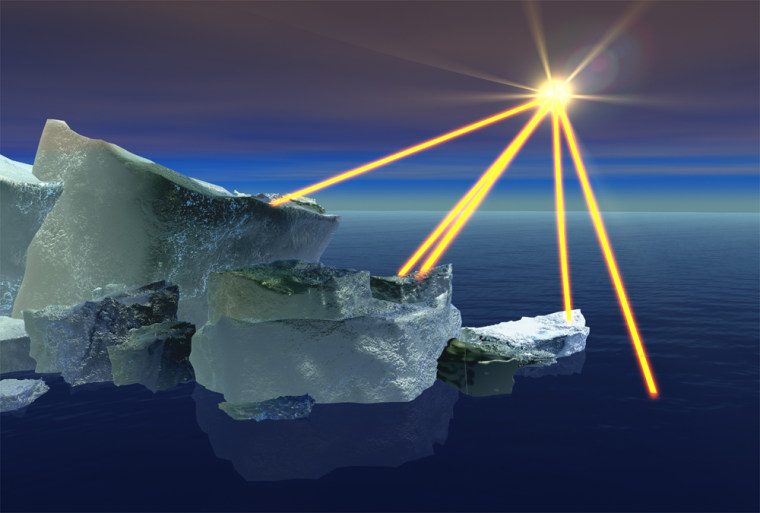Soot mostly from diesel engines is blocking snow and ice from reflecting sunlight, which is contributing to “near worldwide melting of ice” and as much as a quarter of all observed global warming, top NASA scientists say.
The findings about the snow and ice albedos — their power to reflect light falling on the surface — raise new questions about human-caused climate change from the Arctic to the Alps.
“We suggest that soot is a more all-around ‘bad actor’ than has been appreciated,” NASA scientists James Hansen and Larissa Nazarenko wrote in a paper published Monday in the Proceedings of the National Academy of Sciences.
Soot comprises carbon particles that are, along with salts and dust, byproducts of burning fossil fuels and vegetation. In developed countries, the biggest source is diesel fuel. Elsewhere, burning wood, animal dung, vegetable oil and other biofuels is a major source of soot.
Hansen, director of NASA’s Goddard Institute for Space Studies, and Nazarenko, a staff associate there, found soot is twice as potent as carbon dioxide in changing global surface air temperatures in the Arctic and the Northern Hemisphere.
Greenland may be an exception, they said, because it is downwind from Canadian forests and has little manmade pollution.
The one-watt bulb effect
In response to questions from The Associated Press, Hansen said Monday that the authors estimate the soot effect is equivalent to putting a one-watt bulb, the size of a miniature Christmas tree bulb, over every two square yards in the Northern Hemisphere. The effect is greater in northernmost snow regions, and about zero in the tropics.
Levels of airborne soot as high as about 100 parts per billion were found in the Alps, enough to reduce the snow’s ability to reflect light rather than absorb it from about 98 down to between 80 and 90 percent, Hansen said. In the spring and summer, as the snow melts and some soot accumulates as crud on the surface, the remaining snow is even darker, he said.
The scientists suggest in their paper that the same could occur in the Himalayan range of South Asia, where prevailing winds might deposit fossil fuel and biofuel soot carried in a brown haze from India.
Scientists thought until recently that only carbon dioxide and other greenhouse gases have global reach and effect. They now are finding the same thing with these microscopic, suspended particles of pollutants, generically known as aerosols, that settle on ground hours later.
'Interesting early calculation'
Soot particles, which absorb toxic organic material, are minute enough to penetrate skin when breathed in. Soot is the aerosol most responsible for the haze in rapidly developing countries such as India and China, the scientists said.
Michael Oppenheimer, a Princeton professor and expert on climate policy, called the study “an interesting early calculation” that could prove to be important.
“It means that — if it’s right — we need to keep an eye on it,” he said. “When we think about all these greenhouse gases, we ought also to think about controlling these particles that are also changing the climate.”
The Bush administration ordered in 2001 pollution cuts from heavy-duty diesel engines and diesel fuel used in highway trucks and buses. This year it proposed requiring a 90 percent reduction in pollution from diesel-powered construction and other off-road equipment starting with 2008 models.
